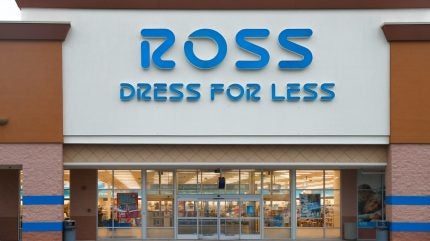
Discount retail chain Ross Stores reported revenues of $4.98bn in the first quarter (Q1) of the fiscal year 2025 (FY25) – a 2.6% rise from the $4.86bn posted during the equivalent quarter of FY24.
The company’s operating income saw an increase to $606.47m over the quarter, up from $591.11m recorded in the period of the previous year.

Discover B2B Marketing That Performs
Combine business intelligence and editorial excellence to reach engaged professionals across 36 leading media platforms.
Net income for Ross Stores in the first quarter was reported at $479.25m, a slight decrease from $487.99m in Q1 FY24.
Its diluted earnings per share (EPS) for the 13 weeks concluded on 3 May 2025 were $1.47 – marginally higher than the EPS of $1.46 for the 13 weeks ended 4 May 2024.
The company also noted earnings before taxes of $640.88m for the quarter, an increase from the $637.06m reported in 2024’s corresponding quarter.
By the end of this period, Ross Stores had expanded its store count to 2,205, up from 2,127 stores at the same point in 2024.

US Tariffs are shifting - will you react or anticipate?
Don’t let policy changes catch you off guard. Stay proactive with real-time data and expert analysis.
By GlobalDataRoss Stores CEO Jim Conroy stated: “Despite the slower start to the spring selling season in February, our monthly sales performance improved sharply, month after month, for the balance of the quarter. For the first quarter, sales and earnings performed at the high end of our expectations while operating margin of 12.2% was flat year-over-year.”
Ross Stores has withdrawn annual guidance but has provided guidance for the second quarter in the light of prevailing macroeconomic and geopolitical uncertainty.
In the quarter ending 2 August 2025, Ross Stores anticipates comparable store sales to range from flat to an increase of up to 3% “on top of a 4% gain in the second quarter of last year”.
The company forecasts second-quarter EPS to be between $1.40 and $1.55, compared to an EPS of $1.59 for the corresponding period ended 3 August 2024.
This projected EPS includes an estimated cost impact from tariffs ranging between $0.11 and $0.16 per share.
“Heightened macroeconomic and geopolitical uncertainty persists, most notably prolonged inflation and evolving trade policies. While we directly import only a small portion of our merchandise, more than half of the goods we sell originate from China. As such, we expect pressure on our profitability if tariffs remain at elevated levels. Given the varying nature of tariff announcements, we are only providing an outlook for the second quarter at this time and are withdrawing our previously provided annual sales and earnings guidance,” Jim Conroy added.





